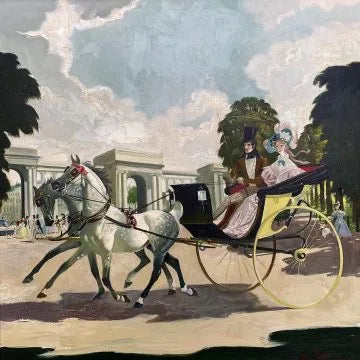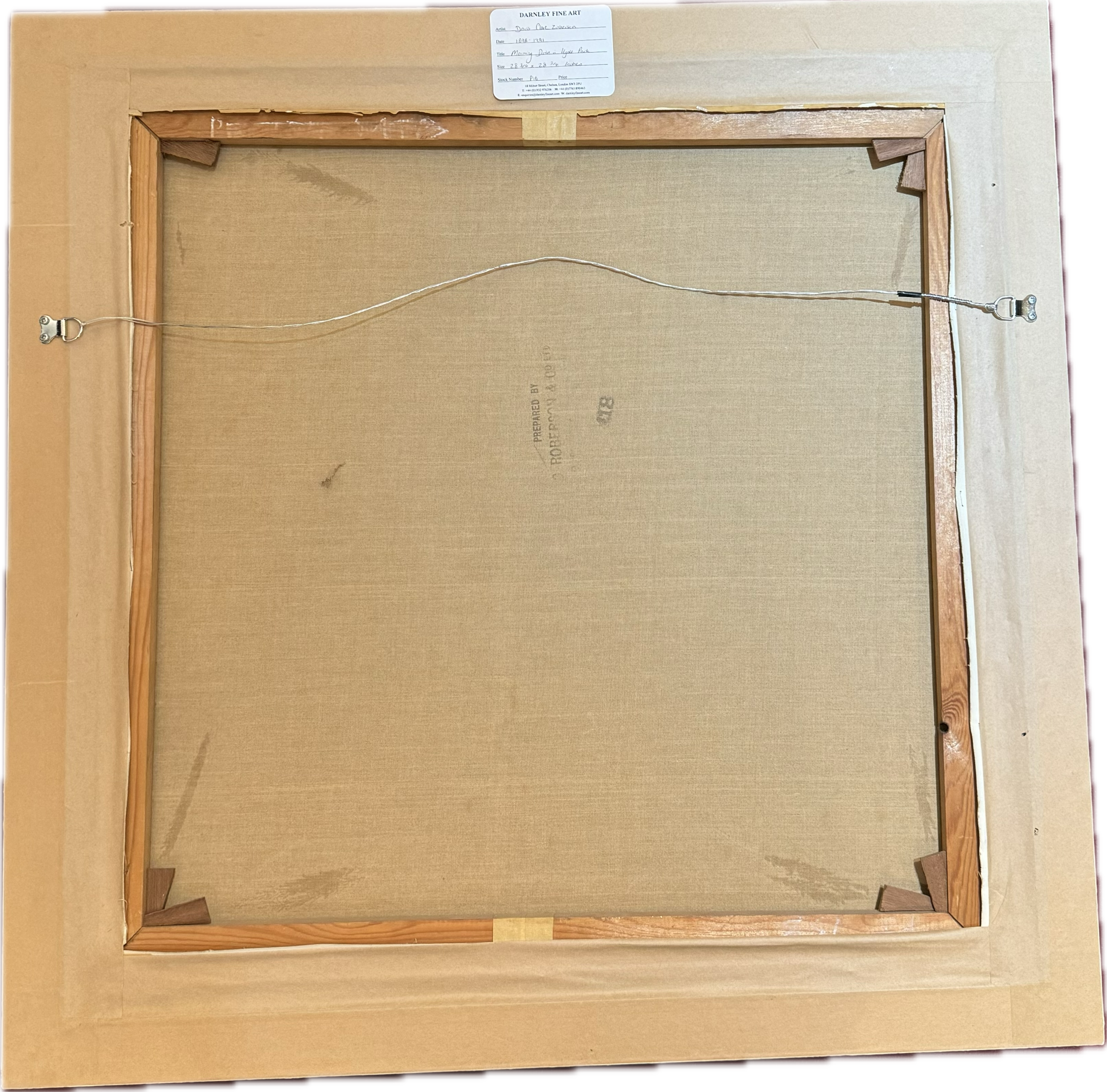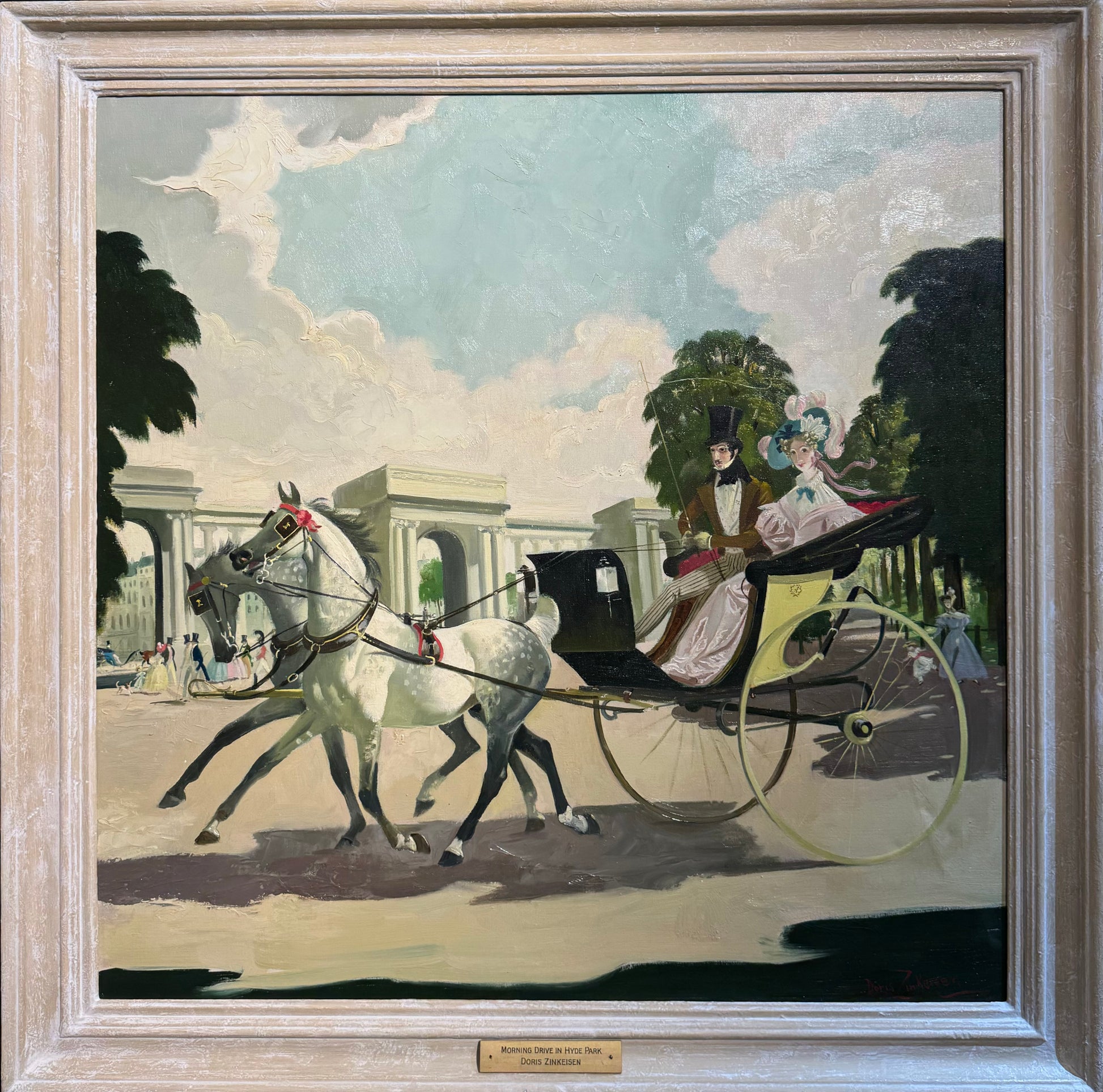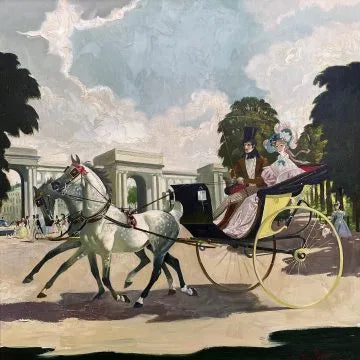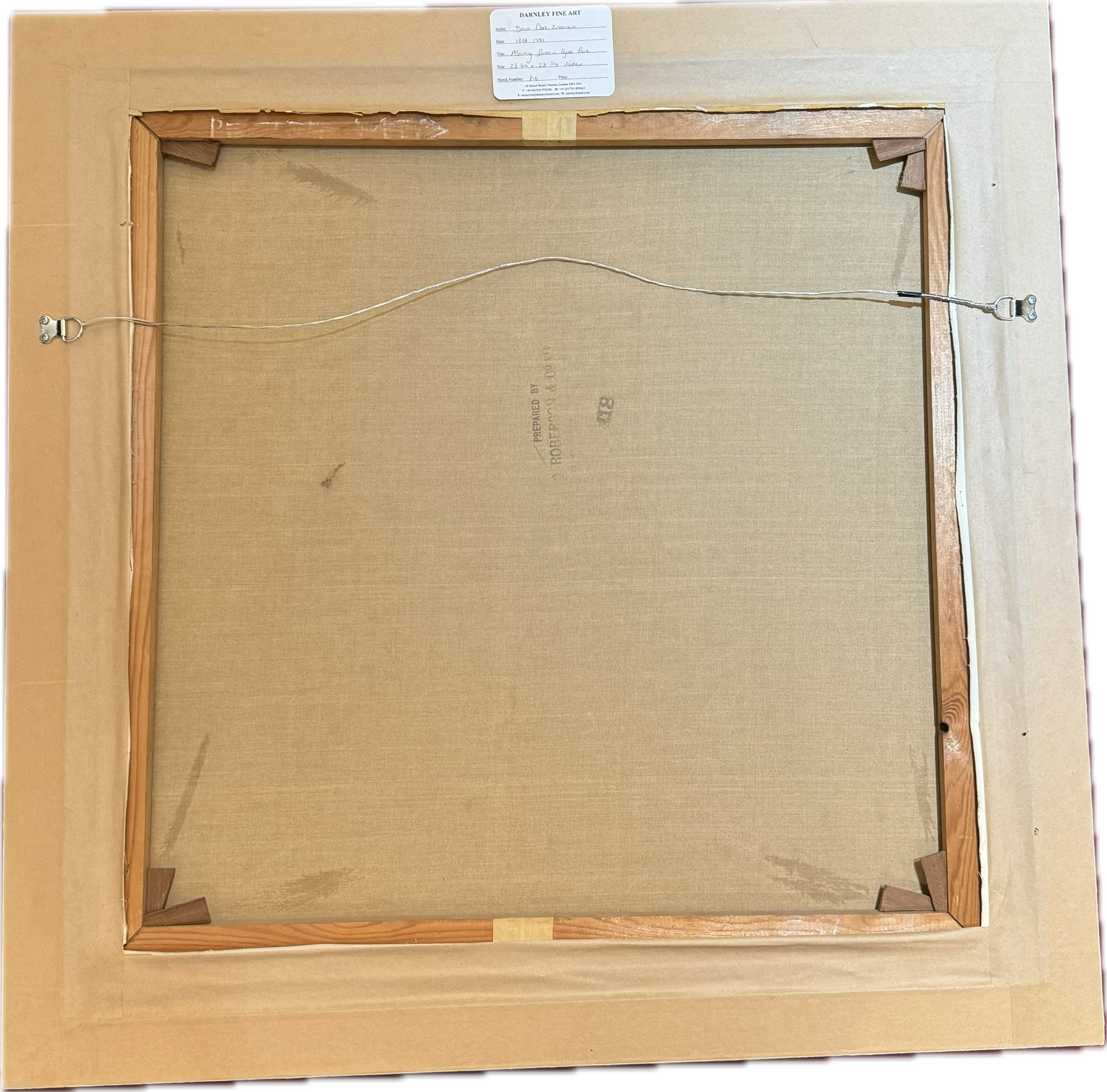
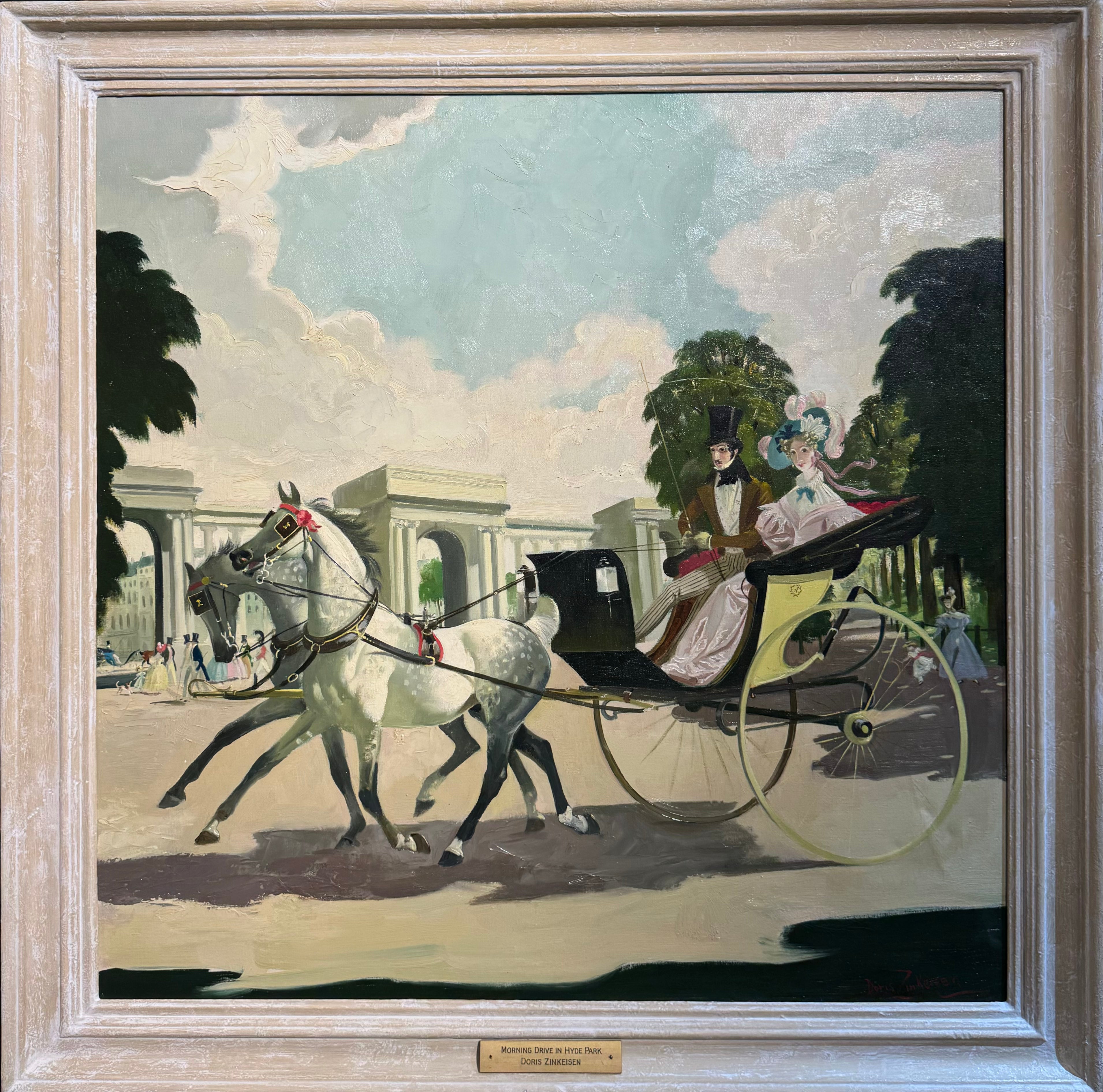
Doris Clare Zinkeisen
Morning Drive in Hyde Park
Oil on canvas, signed lower right
Image size: 28 3/4 x 28 3/4 inches (73 x 73 cm)
Contemporary frame
Doris Zinkeisen
Doris Zinkeisen was a British painter, stage-set and costume designer, writer and equestrian champion. She was a familiar figure in the artistic world from the 1920s onwards. Her realist style led to her success as a painter of society portraits, horse paintings, and murals for the RMS Queen Mary (1935) and RMS Queen Elizabeth (1940). She also produced posters for several railway companies. She is perhaps best known for her numerous stage designs that she produced during the 1920s and the 1930s. During the Second World War, she worked for the St John Ambulance Brigade, and as a war artist made drawings of the Bergen-Belsen concentration camp after its liberation, which are held in the Imperial War Museum.
Doris became especially well known for her representation of elegant horses, and was especially adept at capturing their movement using clever arabesques of colour, as seen here. The roots of these equine paintings, though extremely accurate in the detailing of the harnessing and the horse-drawn carriages, lie in her work for the British film industry in the 1930s.
Indeed, in some of the costume dramas Doris made designs for, such as Victoria the Great (1937) and Sixty Glorious Years (1938), there are significant scenes with horses and carriages. It is in these films we find Doris’ chief source of inspiration for her paintings of horses and carriages in period settings, an interest also triggered by her own enduring involvement and expertise as an award-winning horsewoman.
Doris uses her paintings of similar scenes in period settings to have a nostalgic look at the extremely productive golden periods of her career between the wars and during the 1940s. Unsurprisingly, she captures the same appeal that costume dramas on stage or film have. Where the past is exotic and a source of escapism in the sense of being flights from everyday reality. This manifests itself in Doris’ paintings in colourful costumes and an unrestrained ambience of elegance.
Doris rarely dated these types of ‘genre’ paintings. However, the high level of detail in this work, notably not always present on later paintings from the 1970s, strongly suggests that this painting was completed in the 1950s. This level of detail can be seen in the spokes on the carriage’s wheels, the harnessing and the activity in the background.

